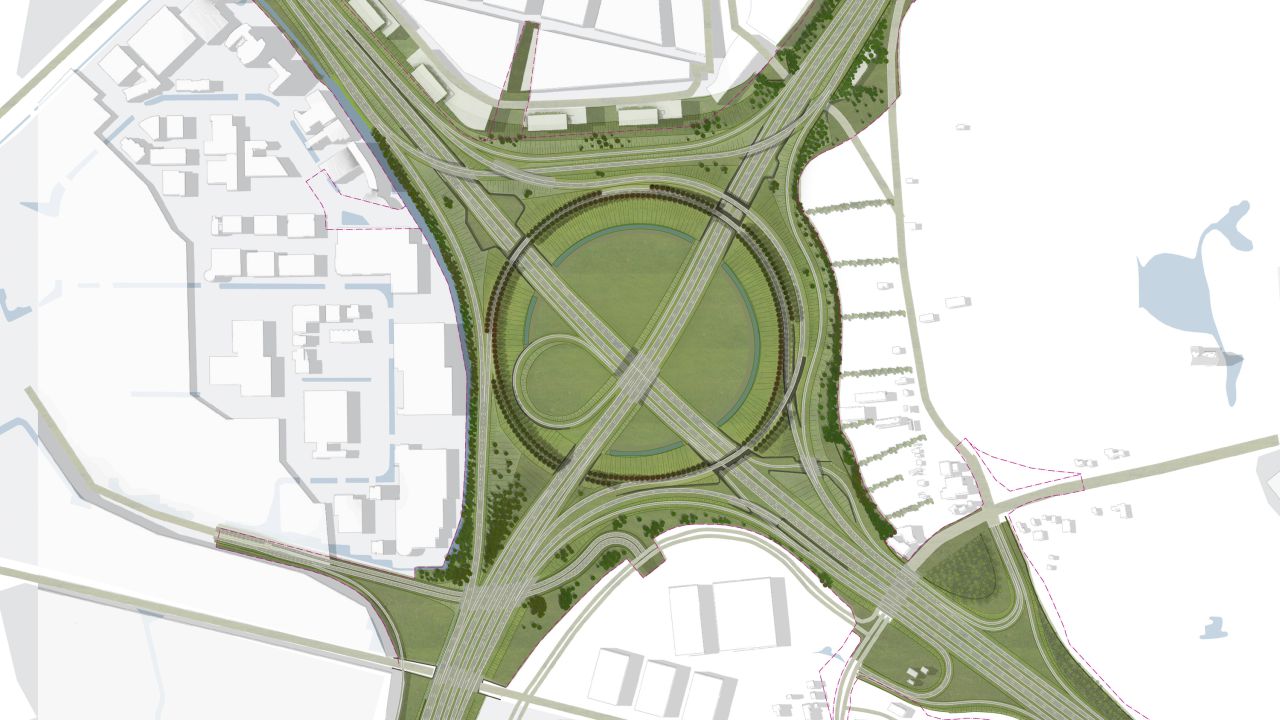Amersfoort, Leusden, Bunschoten, Nijkerk, Barneveld - The Hoevelaken Junction appears in the list of the top 10 traffic jams in the Netherlands every day. The road traffic also causes noise nuisance and reduces air quality. Rijkswaterstaat, the Department for Public Works and Water Management, therefore wishes to improve this junction, in cooperation with the region. Changes to the junction and the widening of the A1 between Bunschoten and Barneveld and the A28 between Nijkerk and Leusden will ensure that traffic flows more smoothly.
| Location | Amersfoort, Leusden, Bunschoten, Nijkerk, Barneveld |
| Assignment | Master plan, strategy |
| Design | 2014-present |
| Construction | 2022-2024 |
| Client | Rijkswaterstaat (Directorate-General for Public Works & Water Management) |
| Team | John Boon, Sjaak Punt, Kees Neven |
| In collaboration with | AE Architects |
We were commissioned by construction consortium CA1|28 to take responsibility for spatial quality and design during the draft route decision and final route decision phases. This was carried out in a complex administrative context with many local parties, in an environment where physical space is often limited. The spatial quality also needed to be improved as part of this process, and the ambition was to turn the junction into an icon.
The junction will be given a new configuration, with the landscape playing a central role. Instead of the cloverleaf design, there will be long, curved link roads arranged around a central ‘bowl’. The bowl itself is an open space, surrounded by a high rim with a circle of trees. In addition to improved flow, a unique landscape is created, forming a landmark for road users. Where the junction and its planting first formed an ‘island’ in the ‘sea’ of emptiness formed by the polder, it is now an open space in the highly urbanized area around Amersfoort.
The project also includes construction of two brand-new service areas and expansion of two existing service areas. The barrier formed by the motorway for cyclists and walkers will also be reduced in various places, resulting in a better (recreational) connection with the surrounding area for people from Amersfoort.
